Notable Land Sales Video: Check out the video above for notable farmland sales from Iowa for March!
Tariffs: Tariffs on U.S. soybeans to China are currently 114%. China, our biggest soybean buyer, is not buying many U.S. soybeans. This is partly seasonal, due to Brazil’s harvest being over 95% complete, but tariffs will affect the long-term purchases of U.S. soybeans to China just like they did in 2018. The uncertainty around tariff policy will continue to disrupt the commodity markets, which will also affect the farmland market. The Kansas City Federal Reserve reported that “Tariffs on U.S. exports could lead to a reduction in aggregate farm revenues, while tariffs on U.S. imports could lead to increases in food prices.” Continue to watch what policy decisions come out of the White House.
Link: Key Agricultural Trade Partners Are Important for U.S. Farm Sector Revenues and Food Prices
Planting Progress: Planting of corn and soybeans is underway in the Corn Belt. 24% of corn acres have been planted. The five-year average is 24%. 18% of soybean acres have been planted. That is ahead of the five-year average of 12%. Currently, there are no real planting progress concerns. Continue to watch these numbers in the coming weeks for any delays in planting, as well as U.S. Weather reports.
Link: Crop Progress

Tariff Study: I will continue to link the tariff study done by the National Corn Growers Association and the American Soybean Association. They did a great job explaining the intricacies of tariffs and their effect on the agricultural economy.
Link: Tariff Study
Farmland Sales: Below are a few notable farmland sales from March.
80 acres sold in Keokuk County, IA. The farm had a CSR-2 rating of 84 and sold for $16,500 per acre, or $196 per CSR-2 point.
157 acres sold in Clay County, IA. The farm had a CSR-2 rating of 94 and sold for $16,909 per acre, or $196 per CSR-2 point.
179 acres sold in Buchanan County, IA. The farm had a CSR-2 rating of 76 and sold for $14,100 per acre, or $185 per CSR-2 point.
Link: Corn Suitability Rating (CSR-2) Explainer
Check out the rest of the newsletter for important indicators that affect the land market and agriculture.
Commodity Markets
Corn:
Feed and Residual Use: USDA’s latest estimates were revised downward from their previous report of 5.775 billion bushels of feed and residual use. The new projection is 5.750 billion bushels predicted for the 2024-2025 marketing year.
Why it Matters: Feed and residual demand account for about 40% of corn usage. The price of wheat could cut into corn feed numbers. As noted above, the USDA revised feed and residual use downward.
Ethanol: In 2024, ethanol demand was 5.478 billion bushels. Recent USDA estimates kept those projections for the 2024-2025 marketing year unchanged at 5.5 billion bushels.
Why it Matters: Ethanol accounts for roughly 40% of corn usage. The Trump administration granted a waiver for summer E-15, which could help improve ethanol usage.
Exports: Projections for corn exports were 2.450 billion bushels for the 2024-2025 marketing year. USDA’s latest estimate was revised upward from the previous report to 2.550 billion bushels for export in 2024-2025.
Why it Matters: Exports comprise about 20% of U.S. corn demand. U.S. corn sales have remained strong. Mexico remains our biggest buyer. See the chart below.
Link: WASDE
Link: Exports
Soybeans:
Crush: The National Oilseed Processors Association (NOPA) crush data for March was 194.6 million bushels, up from 196.4 million bushels a year ago.
Why it matters: Roughly 50% of U.S. soybeans are used for crush and oil production.
Exports: The USDA’s recent export projections showed that 1.825 billion bushels of soybeans were estimated for export during the 2024-2025 marketing year. Unchanged from the previous report.
Why it matters: About 50% of our U.S. soybean crop is exported. With tariffs now implemented on China, we will see how that affects our weekly export numbers. Keep a close eye on this. Last week, Mexico was our biggest buyer of U.S. soybeans. Historically, China is our biggest buyer. See the chart below.
Link: WASDE
Link: Exports
Commodity Futures Trading Commission: The Commodity Futures Trading Commission (CFTC) shows that managed money has a long position in both the corn and soybean markets. Long corn contracts of (112,805) and long soybean contracts (31,067).
Why it matters: The funds influence the commodity markets, so we examine their monthly positions. The funds have increased their long positions slightly in both the corn and soybean markets from last month. Lack of clarity on trade policy is keeping money on the sidelines. May corn is currently at $4.61 per bushel, and May soybeans are at $10.32 per bushel.
Link: CFTC
Interest Rates: The sources I am talking to say yearly operating notes range between 7.0% and 8.0%. Last year, they ranged between 8% and 9%.
30-year mortgage rate: The current 30-year mortgage rate is 6.8%, compared to 7.2% a year ago.
Why it matters: Interest rates are a major factor in agriculture. Continue to watch what the Federal Reserve does in the coming months. They are planning on cutting interest rates two more times in 2025. However, uncertainties around inflation and tariffs could change this.
Inflation: The Labor Department's monthly Consumer Price Index (CPI) showed a 2.4% % year-over-year increase in its latest report.
Why it matters: This recent data could make the Federal Reserve rethink its plan to reduce interest rates this year as it fears reigniting inflation.
Link: CPI
Fertilizer Prices: According to the USDA Production Cost Report, Anhydrous Ammonia (NH3) averages $788 per ton. A year ago, it was $795 per ton. Potash averages $464 per ton. A year ago, it was $521 per ton. Phosphate (MAP) averages $774 per ton. A year ago, it was $792 per ton.
Why it matters: Continue to pay close attention to tariffs. This could affect the fertilizer market in the months ahead.
LINK: Illinois Production Cost
U.S. Weather: Spring planting is underway. Pay attention to any delays in planting progress, as this could influence the commodity markets.
Link: Drought Monitor
Link: Climate Prediction Center
Agriculture News of Note:
Thanks for reading the Corn Belt Newsletter! If you’re looking to buy or sell a farm or want an evaluation of your property, reach out to me.
Contact information: Joshua Manske (Farm Realtor)
Cell: 515-707-1774
Email: joshuahmanske@gmail.com
Farm and Home Services LLC

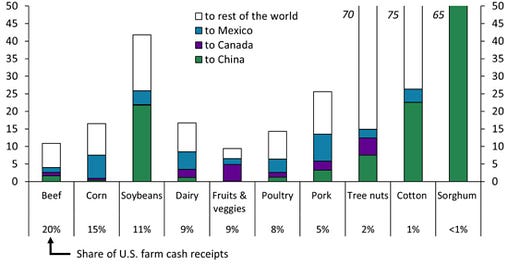




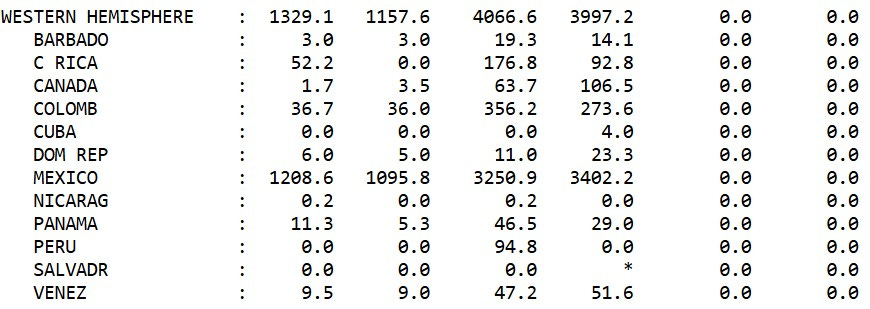


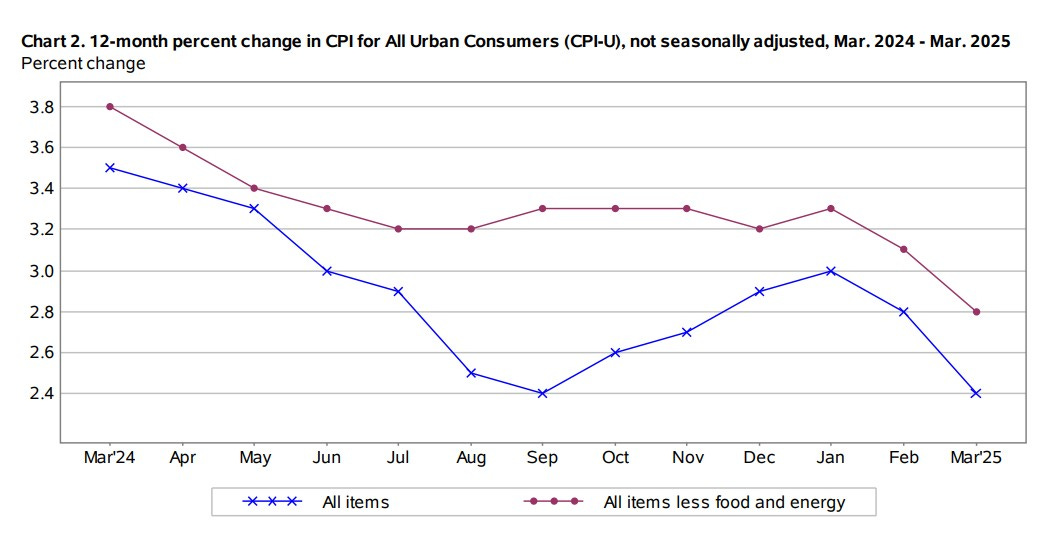
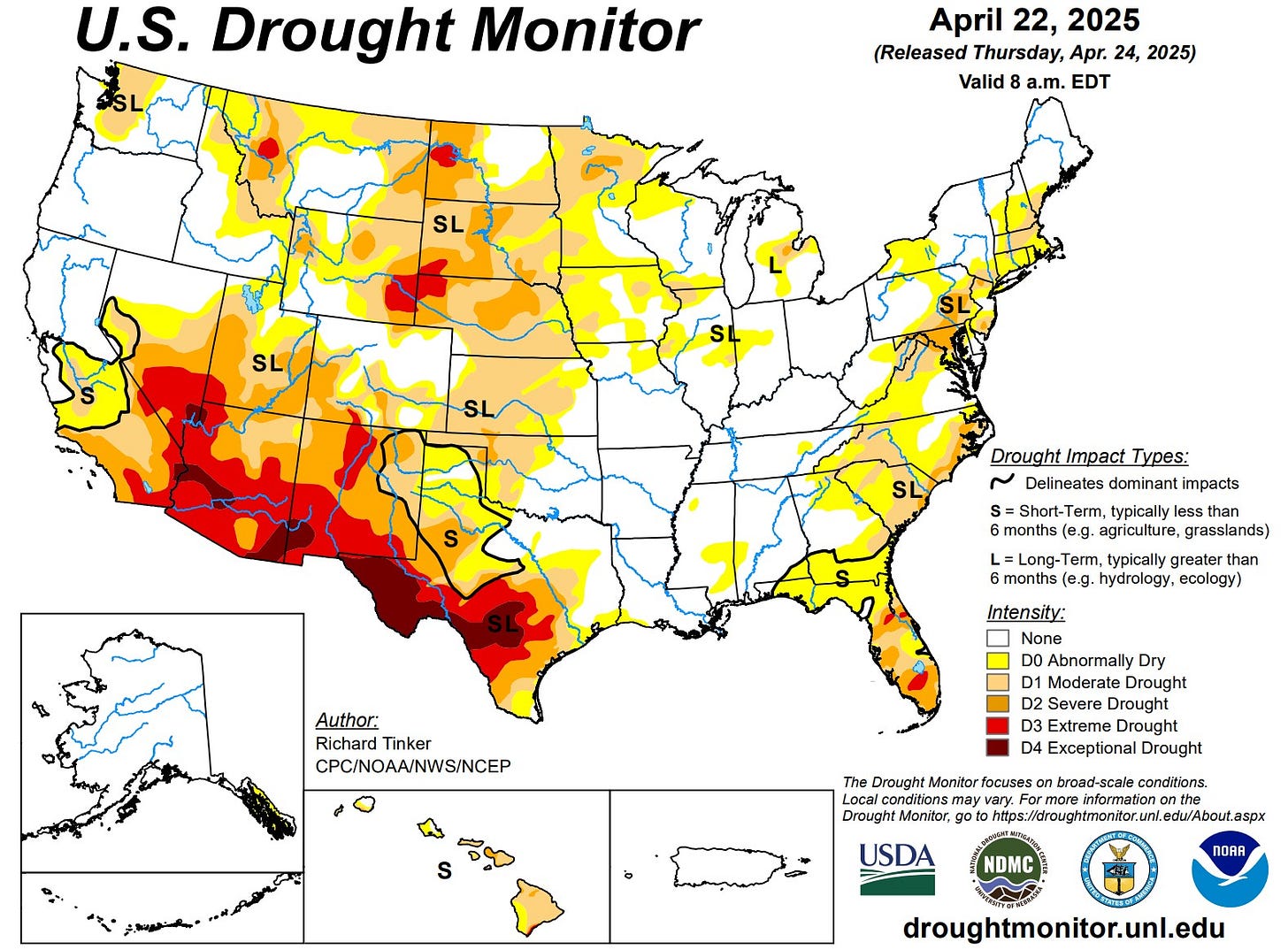
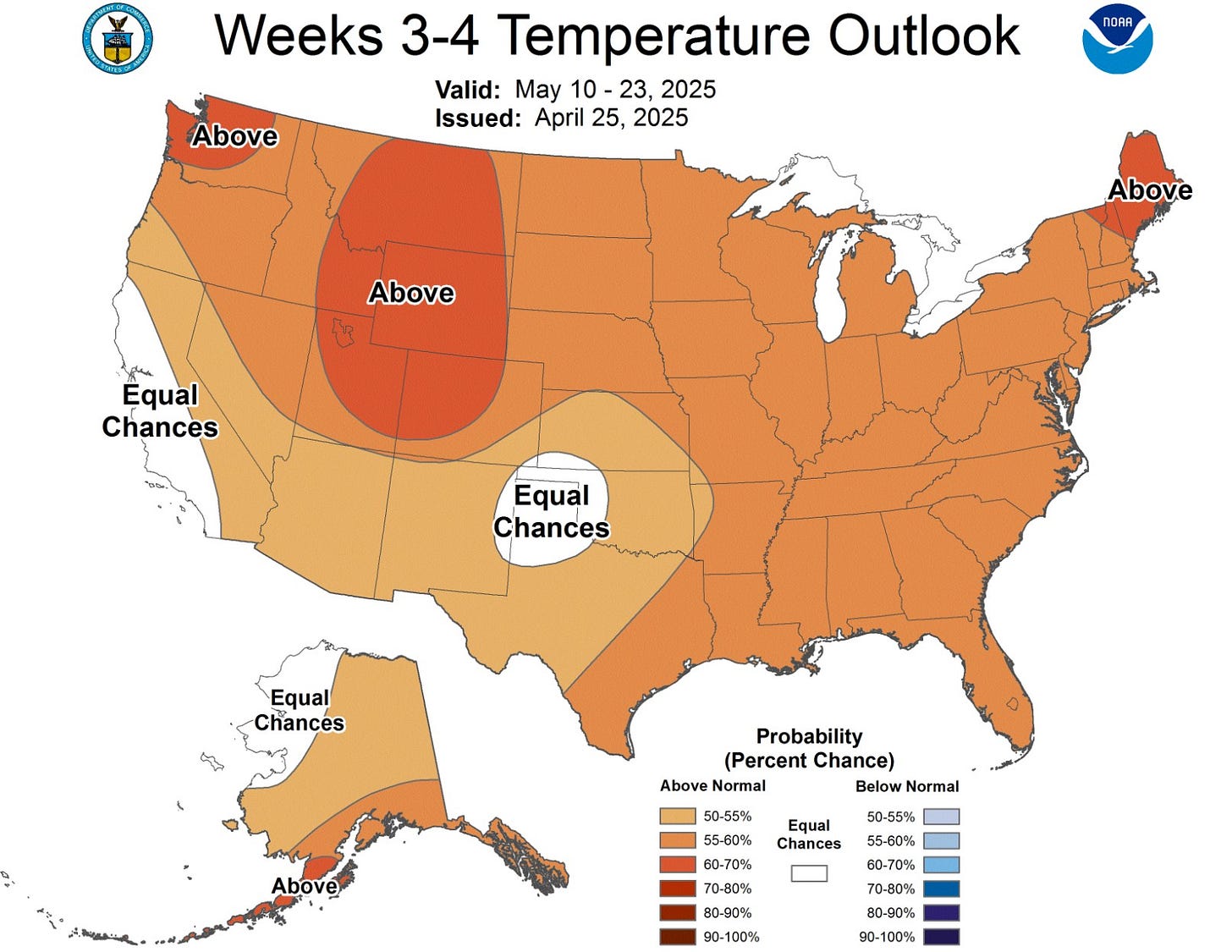
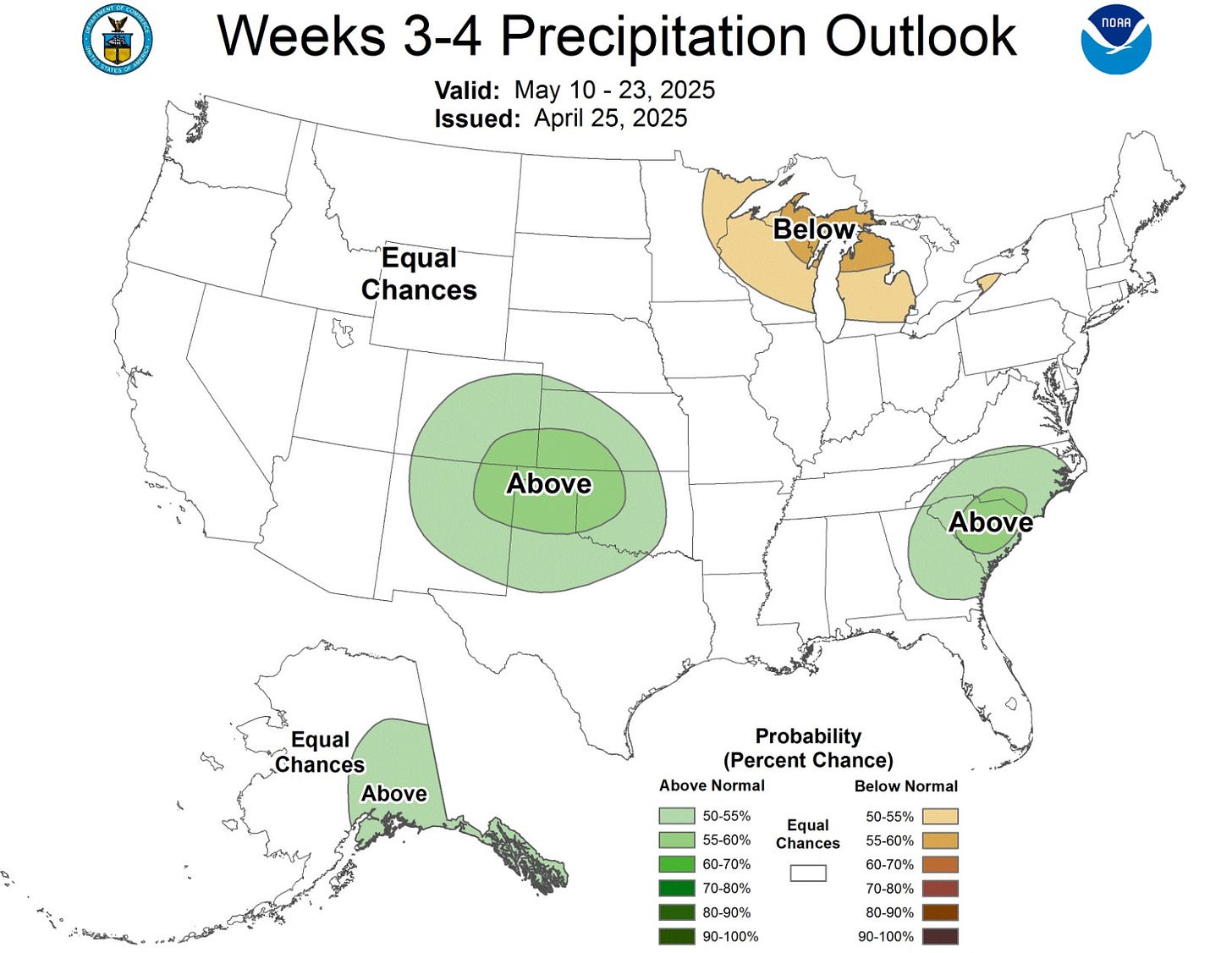
One of the best monthly look aheads for midwestern ag available. Thanks for putting this together!
This is a very useful publication.